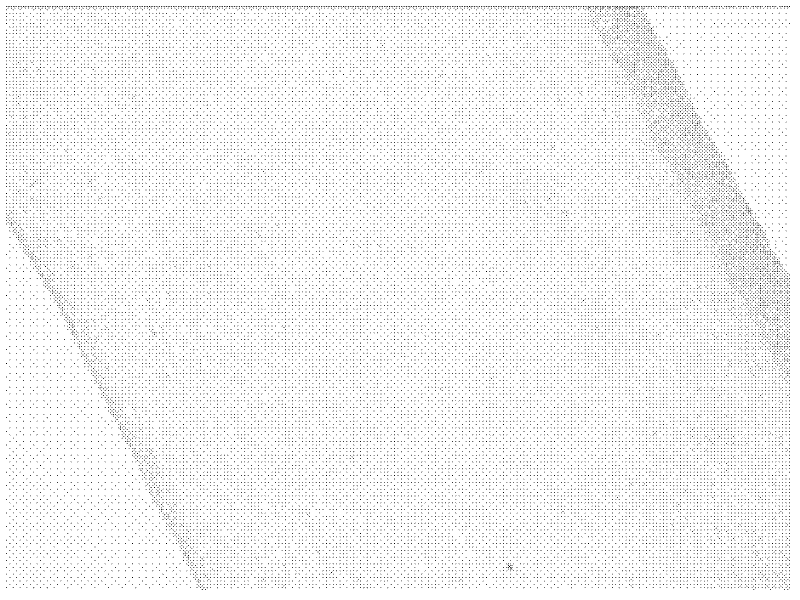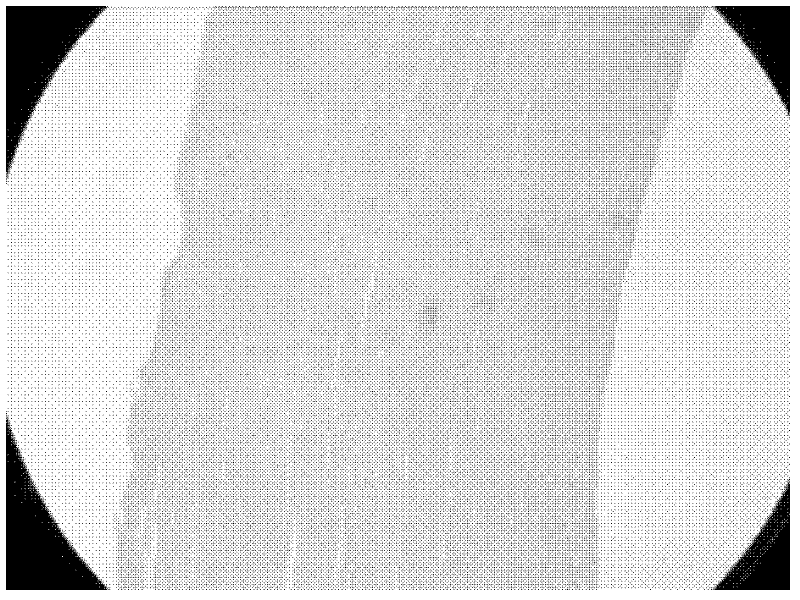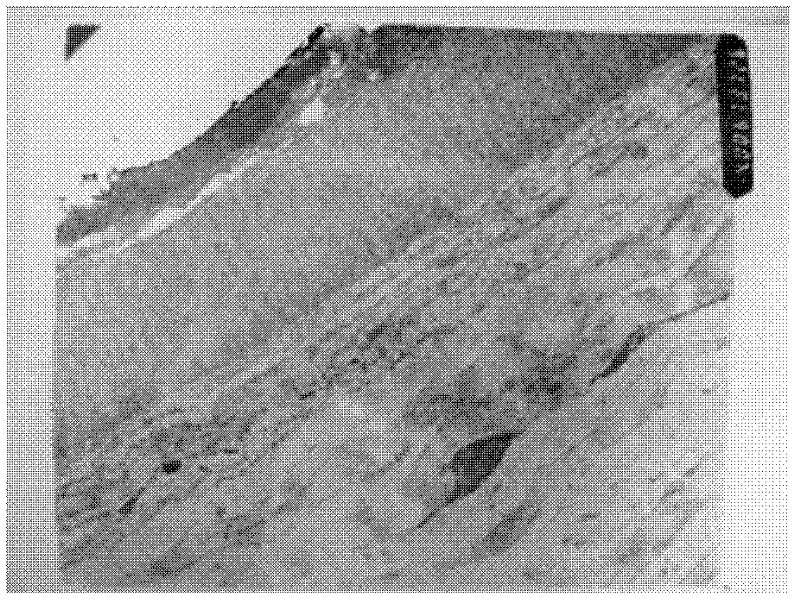Decellularized heterogeneous corneal stroma carrier and its preparation method and application
A corneal stroma and decellularization technology, applied in the field of medical materials, can solve the problems of HIV infection, uneven cell growth, easy shedding, etc.
- Summary
- Abstract
- Description
- Claims
- Application Information
AI Technical Summary
Problems solved by technology
Method used
Image
Examples
Embodiment 1
[0054] Preparation of decellularized ostrich corneal stroma carrier
[0055] (1) Extraction and preservation of animal eyeballs: Take healthy ostrich eyeballs within 2 hours of execution in a regular and qualified slaughterhouse, rinse the eyeballs with normal saline, and place the rinsed eyeballs in a wet room at 4°C to 8°C Preserve, cut the lamellar cornea within 24 hours;
[0056] (2) Sectioning of the lamellar cornea: wash the ostrich eyeballs preserved in step (1) alternately with normal saline and normal saline containing 400U / mL tobramycin, and then operate aseptically under an operating microscope, using an 8mm-diameter Scaled trephine drilling for lamellar cornea with a thickness of 300 μm;
[0057] (3) Hypertonic solution combined with enzyme digestion to remove lamellar corneal epithelial cells and stromal cells:
[0058] 301. Put the lamellar cornea described in step (2) into a hypertonic solution (NaCl aqueous solution with a mass concentration of 12%), and soak...
Embodiment 2
[0067] Preparation of decellularized porcine corneal stroma carrier
[0068] (1) Extraction and preservation of animal eyeballs: take healthy pig eyeballs within 2 hours of slaughter in a regular and qualified slaughterhouse, rinse the eyeballs with normal saline, and place the rinsed eyeballs in a wet room at 4°C to 8°C Preserve, cut the lamellar cornea within 24 hours;
[0069] (2) Sectioning of the lamellar cornea: rinse the pig eyeballs preserved in step (1) alternately with normal saline and normal saline containing 400U / mL tobramycin, then perform aseptic operation under an operating microscope, and use a 5mm diameter Scaled trephine drilling for lamellar cornea with a thickness of 150 μm;
[0070] (3) Hypertonic solution combined with enzyme digestion to remove lamellar corneal epithelial cells and stromal cells:
[0071] 301. Put the lamellar cornea described in step (2) into a hypertonic solution (NaCl aqueous solution with a mass concentration of 3%), and soak for ...
Embodiment 3
[0079] Preparation of decellularized bovine corneal stroma carrier
[0080] (1) Extraction and preservation of animal eyeballs: Take healthy cow eyeballs within 2 hours of slaughter in a regular and qualified slaughterhouse, rinse the eyeballs with normal saline, and place the rinsed eyeballs in a wet room at 4°C to 8°C Preserve, cut the lamellar cornea within 24 hours;
[0081] (2) Sectioning of the lamellar cornea: wash the bovine eyeballs preserved in step (1) alternately with normal saline and normal saline containing 400U / mL tobramycin, then operate aseptically under an operating microscope, and use a 5mm-diameter Scaled trephine drilling for lamellar cornea with a thickness of 150 μm;
[0082] (3) Hypertonic solution combined with enzyme digestion to remove lamellar corneal epithelial cells and stromal cells:
[0083] 301. Put the lamellar cornea described in step (2) into a hypertonic solution (NaCl aqueous solution with a mass concentration of 20%), and soak for 1 da...
PUM
 Login to View More
Login to View More Abstract
Description
Claims
Application Information
 Login to View More
Login to View More - R&D
- Intellectual Property
- Life Sciences
- Materials
- Tech Scout
- Unparalleled Data Quality
- Higher Quality Content
- 60% Fewer Hallucinations
Browse by: Latest US Patents, China's latest patents, Technical Efficacy Thesaurus, Application Domain, Technology Topic, Popular Technical Reports.
© 2025 PatSnap. All rights reserved.Legal|Privacy policy|Modern Slavery Act Transparency Statement|Sitemap|About US| Contact US: help@patsnap.com



